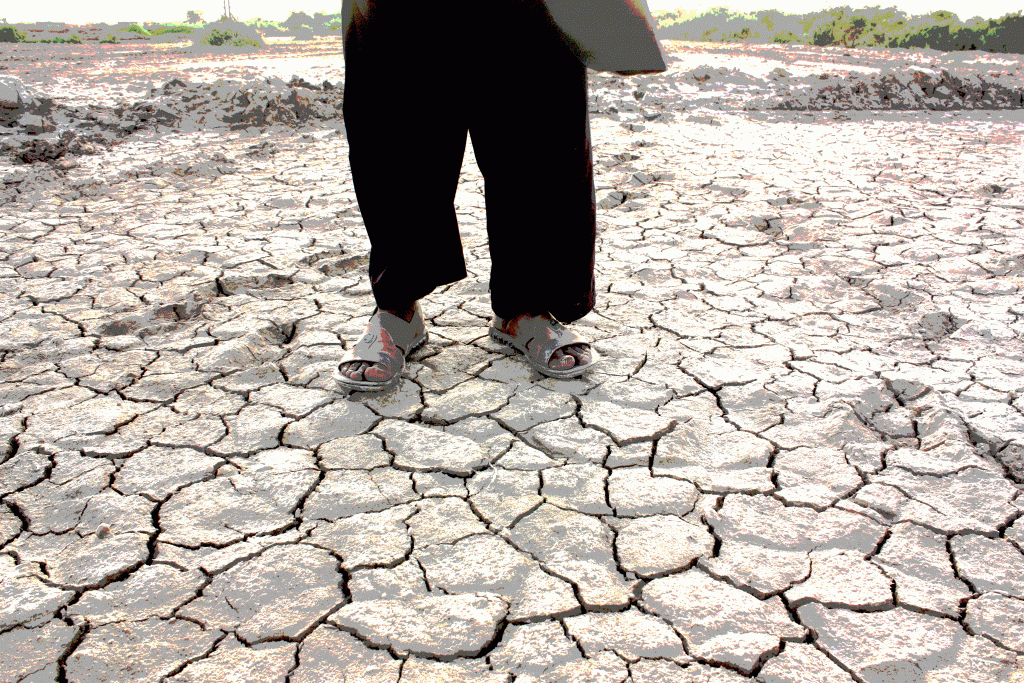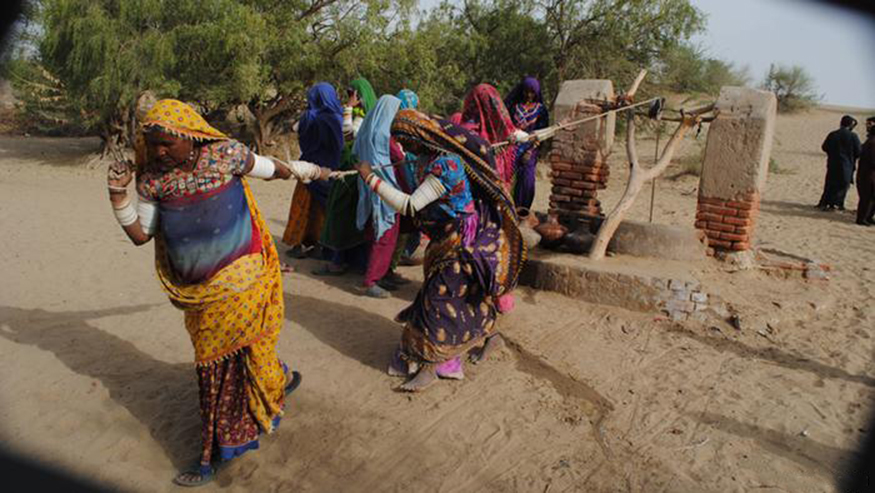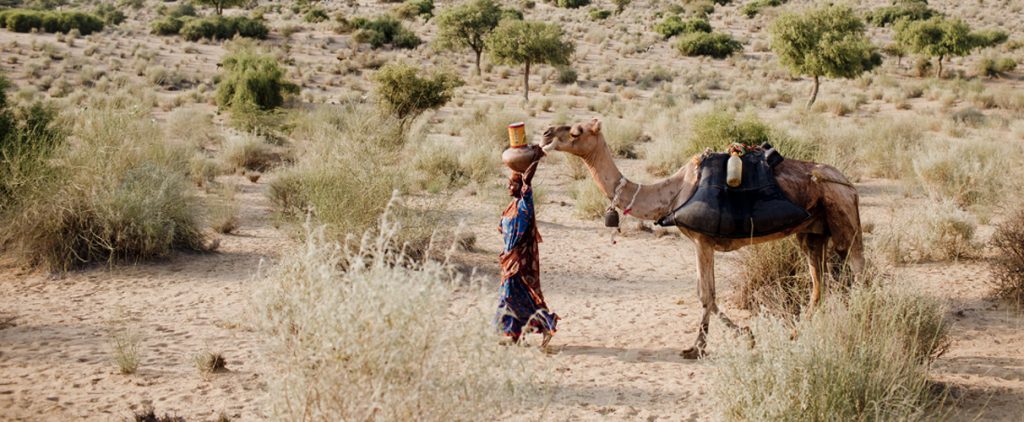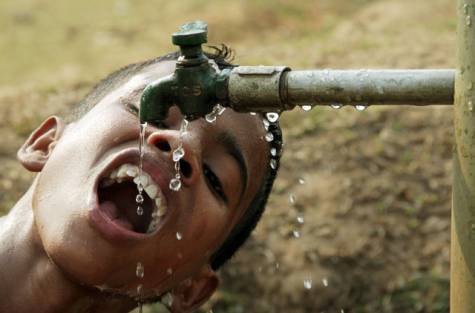Water Woes
By Afia Salam | Environment | Newsbeat National | Published 9 years ago
It is strange that it takes a belligerent, aggressive neighbour mouthing threats to cut off water to Pakistan for people to sit up and take notice of the alarming situation in a country that is already moving from being water-stressed to water-scarce, and can lay claim to a storage capacity of merely 28 days.
Unfortunately, the threats focused attention on the Indus Water Treaty that Indian Prime Minister Narendra Modi threatened to scrap in view of escalations across the Line of Control in Kashmir, especially after the Uri incident. Knee-jerk reactions on our side of the border called for ensuring water security and for building the contentious Kalabagh Dam. In the absence of a broader dissemination of the range of solutions available, the debate did not go beyond these issues. Focus on this one ‘solution’ not only reopens the wounds of interprovincial mistrust, but also shifts the focus away from the need to look at the issue of water in a holistic manner.
We must bear in mind that Pakistan is a country that has a water-dependent economy. Primarily agrarian, its agriculture is sustained through the water resources of the Indus River basin. Depletion or deterioration in these resources triggers fears of food insecurity due to adverse impacts on agriculture. On the other hand, rapidly growing population pressures mean that the availability and quality of its water are being compromised.
John Briscoe, a leading water expert with extensive knowledge of regional water issues, was known as a ‘friend of Pakistan’ in water circles. Briscoe’s report, ‘Pakistan’s Water Economy: Running Dry,’ pointed out that Pakistan is already one of the most water-stressed countries in the world, a situation which is going to degrade into outright water scarcity due to high population growth. His report raised some eyebrows when it came out in 2005, but when updated and published in 2008 it rang alarm bells, and water became a part of serious discourse.
Then came the devastating 2010 floods, and water was looked at from another dimension. The need was felt for flood control, storage and management of this great volume of water.
The RAMSAR Advisory Mission made a detailed study and offered recommendations that favoured natural solutions over engineering and infrastructure solutions. They included the diversion of excess water into wetlands and old river channels, which could serve the dual purpose of storage as well as ground water recharge, on the lines of the management of the Yangtze river basin in China.
In the absence of a National Water Policy that had been in different stages of preparedness, the caveat of devolution was thrown in and water became a provincial subject. This one move hamstrung policy development, though later the provinces did make attempts at drafting their own policies. This, however, was too little too late and lacked the cohesion that this national resource deserves.
The issues addressing ground water resources management, the ensuring of availability of water to all users, agricultural, industrial as well as domestic, were not nested in one place so could not be addressed judiciously.
The alarming gap in demand and supply, and the huge problem of water wastage in all sectors can be traced back to a lack of cohesive plan for conservation. This lack of planning to cut the wastage of water is usually thrown at Pakistan whenever it raises objections to water infrastructure developments across the border.
There are accusations of the violation of the Indus Water Treaty, but two attempts at proving its point in international arbitration have not delivered the desired results for Pakistan, for a variety of reasons. Water diplomacy has not been Pakistan’s strong point. As environmental lawyer Rafay Alam explains, “Water diplomacy isn’t just a subject, it’s an entire field of study. I don’t think having a subject on water diplomacy, per se, will be of any use. A course (diploma, degree) on water diplomacy, on the other hand, would bring together aspects of negotiation, foreign relations and their management, knowledge of water and its uses (agricultural, domestic), environmental regulation and history.”
Rafay adds, “The field of water diplomacy is advancing rapidly and is tied to the idea of planetary security. The future depends on how we secure our planet (and not just ourselves) from climate vulnerabilities.”
Modi’s recent threats, first of scrapping the treaty — which was tempered down by the saner elements in his country — and then of not allowing a drop of ‘their’ water coming to Pakistan should be unpacked for what they really mean. The first threat petered out because the treaty has weathered far stronger tests than mere threatening rhetoric; it has survived two full-scale wars and blow hot, blow cold skirmishes from the time of its inception to date.
However, because India is the upper and Pakistan the lower riparian user, the element of threat on one side and insecurity on the other will always persist. This was, in fact, the reason why the Indus Water Treaty was crafted, under international guarantors.
It has worked well enough, more in favour of Pakistan than India. However, the factor of climate change was not there when the use of the western rivers of Ravi, Beas and Sutlej was granted to India. The shifting monsoon and glacial melt rates mean changes in the average flow of water, so now these variables also have to be taken into account.
Population pressures and agricultural needs to cater to a growing population’s demand for food means ever-increasing demands on water distribution on both sides of the border. Existing projects will need to be expanded to cater to that demand, and herein lies the cause of tension.
Pakistan views any Indian plans to build projects that may store water with suspicion, while India claims it has not utilised its rights under the Treaty to their fullest. And this is what Modi’s second ‘threat’ amounts to. When he says not a single drop over which India has rights should be allowed to flow to Pakistan, it essentially implies the complete use of whatever the IWT awards India. This will mean infrastructure development, which may take years. So for the present, the only thing that can disturb the status quo is climate change, and not civil engineering works or hydro projects.
Athar Parvaiz, an environmental journalist based in Srinagar, puts forward another point of view. Given that the rivers flow through Kashmir, and we have India and Pakistan bickering over them, he says, “It has been a long-standing demand of Kashmiris (including pro-India Kashmiri politicians) through whose land the three rivers — Jhelum, Chenab and Indus — are flowing, that they should get a share of the water resources of the Indus Basin for the development of the state. They argue that despite having the potential of producing more than 20,000 MWs of electricity from these rivers, Kashmiris often have to contend with a few hours of electricity, especially in the severe winters.
While the Jammu & Kashmir Assembly has passed resolutions on the IWT urging New Delhi to review the treaty for accommodating the concerns of Kashmiris, the Kashmiri people have never protested against it, due to their emotional attachment with downstream Pakistan. If it was China or some other country, I am sure common Kashmiris would have come out on the streets to protest against this treaty. To my mind, this is an interesting aspect of the treaty that has never been highlighted.”
The Kashmiris have, however, accused New Delhi of signing a water treaty with Pakistan for the benefit of other Indian states at the cost of Kashmir’s own development. The Jammu & Kashmir government demands that New Delhi compensate for resultant losses of billions of rupees to Jammu & Kashmir. Even a sitting minister of the former state government once termed India’s National Hydro Power Corporation (NHPC) as the East India Company in Kashmir, saying it was looting Kashmir’s water resources by producing energy to take to other parts of India, while giving just 12 per cent royalty to the Jammu & Kashmir government.
An expert, Professor Shakil Romshoo, has asked the Jammu & Kashmir government to form a concrete proposal for the optimum utilisation of waters of the Jhelum, Chenab and Indus. The inter-ministerial task force was set up by the Modi government recently to search out ways of utilising India’s full share of Indus waters, under the provisions of the IWT.
Kashmiri voices usually get drowned out in this very important narrative on water. If they start resonating with policy makers in India, then the dynamics for the solutions being sought across the border may need to be viewed in a different light.
Ali Tauqeer Sheikh, CEO of LEAD Pakistan, an environmental think tank, says, “Modi’s India does not have the technology to hold our water for more than 12 days but can develop it in the future. So should Pakistan, which has not done enough to store water. Right now, we can view his threat as an extension of an election speech, but while India may never exercise the threat, Pakistan should never forget it.”
Sheikh recalls the stoppage of water that took place in 1948, and says there will be long-term negative implications of Modi’s statement, viewed in the light of misgivings in the past.
It must also be borne in mind that Pakistan is not the only country that India shares its river resources with. China is the upper riparian as far as India’s Brahmaputra river is concerned. It has already felt the pinch once, and would not like to test its northern neighbour, in view of its close ties with Pakistan.
Modi’s threat has also turned the attention of many concerned Pakistanis to our other neighbour, Afghanistan. The Kabul River, also part of the Indus basin, is another trans-boundary shared resource. To say that the western border has been restive would be understating the fact. The relations are strained. We also crib about the Indian influence over our Western neighbour, with whom we have no arrangement or treaty to manage shared resources.
Rafay Alam is not worried yet on that score, saying, “Afghanistan is an interesting example. All five of Afghanistan’s major rivers arise within it but flow out of it. Water is fundamentally a water diplomacy issue for it. Every time Afghanistan will seek to exercise its right to develop hydro resources, it will face trans-boundary challenges. But given how distracted Afghans have been fighting the war on terror, there is little capacity that I can see there for water diplomacy.”
In Pakistan’s context, Ali Tauqeer Sheikh says, “Pakistan gets 10-18% water from the Kabul River basin. We have no water treaty with Afghanistan. It is a clean slate on which we can write, learning from other experiences and develop mechanisms to manage the river, which has twice been the cause of flooding in Nowshera over the past five years. Both countries need to invest in flood forecasting research.”
Sheikh emphasises that it is important for us to look for flood prediction research as integrated basin wide management. In the case of Afghanistan, he says, “There is no question of division of rivers here, just one river zigzagging through both countries, and both become upper and lower riparian at different places. One has to come up with an equitable benefit-sharing agreement.”
Sheikh mentions that besides governmental initiatives, a joint research project is underway involving LEAD Pakistan, NUST, Kabul University, University of Massachusetts Amherst, NASA, GCISC (Global Change Impacts Study Center) in Pakistan and the Pakistan Met Department.
Water is a very touchy interprovincial subject as well. Despite the 1991 Water Apportionment Accord, and forums like the CCI and IRSA, the mistrust between the provinces persists on the distribution of the actual allocation, despite availability of monitoring technology.
The environmental degradation of the coastal belt and the ravages of sea intrusion are cited as proof of the allocated amount not reaching the tail end, threatening the deltaic ecosystem, and the communities that live there. This is a human tragedy on a large scale that needs urgent attention.
The injudicious use of water resources and lack of planning have also severely limited the potential to contribute to the economy. The ‘blue economy’ has a huge potential that is being stymied by the lack of state framework. Right now, it is being handled in a very fragmented manner by many different departments and authorities. In the absence of a National Policy, the holistic approach is missing, and this was cited by Ali Tauqeer Sheikh in an article on March 22, 2016, in Dawn that was made part of the judgement of the Lahore High Court, asking the government to submit a progress report by January 16, 2017.
Things are also looking up as far as capacity is concerned as specialty chairs of water are now in place in many universities. A five-year project is underway at the Mehran University in collaboration with the University of Utah, as part of a USAID grant to train researchers and water experts. The Water Informatics and Technology Faculty at LUMS is also focusing on different dimensions of water issues through outreach beyond its student body.
Government inaction and delays in formulating a cohesive water policy, in tandem with a practical plan has fortunately not resulted in similar inaction from concerned citizens and water experts. In fact, recently Hisaar Foundation’s Think Tank on Rational Use of Water presented its report in Sindh, which outlines the recommended policy framework. This will be presented in other provinces as well and suggestions sought, as it retains the elasticity to accommodate suggestions.
Interview: Simi Kamal, Chair, Academic Committee, Hisaar Foundation
Ms Simi Kamal is a geographer with Bachelors (Hons) and Masters Degrees from the University of Cambridge and 30 years of experience in women’s empowerment, water, environment, sanitation and health, irrigation, drainage, food security, climate change and related areas. She is the founder of several private and non-profit organisations, including Hisaar Foundation. She is the author and co-author of over 180 research and evaluation reports, book chapters, handbooks, training modules and numerous articles and papers published and presented nationally, regionally and internationally. She appears regularly on international and national media to present her views on issues relating to water, environment, gender, human rights and the donor-NGO-government nexus.
What prompted the Hisaar Foundation’s Think Tank on Rational Use of Water to come up with these policy recommendations?
The simple answer is that we did it because the government has not been able to finalise a water policy for Pakistan. We, the citizens, are tired of waiting for this crucial document and action in securing, managing and conserving our water resources and using them to generate prosperity for all. We have done this work to give the government a solid base to take action from federal to local levels. We want the government to wake up to the crises and accept our ideas, intellectual capital and support in doing what is necessary. We are here to work with the government on all levels on the one hand, and with citizen groups on the other, so all groups in Pakistan can see and accept their particular responsibility in assuring water and food security for Pakistan in the years to come.
Several members of Hisaar Foundation’s Think Tank on Rational Use of Water had been thinking about and working individually and jointly on various aspects of addressing Pakistan’s major water-related issues from different perspectives. During Hisaar Foundation’s first International Water Conference in Karachi in 2013, these perspectives started to come together and when the Think Tank was established, one of its goals was to come up with recommendations for Pakistan’s water policy. These perspectives were discussed and debated in several sessions of the Think Tank, during the Second International Water Conference in 2015 and the Universities for Water Network (UWN), another initiative of Hisaar Foundation. Stakeholder dialogues were also held on various aspects of the recommendations over two years.
How different are these policy recommendations from the National Water Vision prepared by Sardar Tariq of Pakistan Water Partnership for the Planning Commission?
At the moment, there are two documents in the making — one by WAPDA, for which many open-door consultations happened over an extended period, and another one by the Ministry of Water and Power, the draft of which has been restricted. Several members of the Think Tank were invited to the first set of discussions by WAPDA and have contributed papers and ideas to that process. The drafts of the supposed water policy have been floating for at least a decade, but none of them have led to closure and action. Largely, they are long wish lists without coherence and time frame. The National Water Vision states what is to be done but the HOW is not clear in any of these documents.
Hisaar Foundation’s water policy recommendations are coherent, with a vision of prosperity for Pakistan, five clearly defined focus areas, 10 clearly stated goals and actions for each focus area, precisely laid out, and responsibilities allocated. It is an agenda for action over a defined period of 10 years, with novel ideas for solving problems and calling for all water resources to be considered when allocating to provinces and districts. Our policy document has boldly tackled the issues that are considered too political to discuss and provided solutions that are feasible and doable. We have not been afraid to state the tough choices that Pakistan must make, to point out that well-resourced local governments are a must to manage water appropriately at grassroots levels. We have boldly called for Pakistani financial institutions and banks to come forward and fund water sector development and the water value chain in Pakistan.
How do you plan on engaging with the decision-makers, who have not been able to finalise a policy that is the government’s job?
We have already been engaging with governments at various levels through our conferences, meetings and stakeholder dialogues. These recommendations have been years in the making and have taken on board the documents and views of the government as well. We have engaged with parliamentarians and opinion leaders, as well as business leaders. Now that we have a solid published set of recommendations, we are telling the government, “we have done your work for you, now look at it critically and get national and provincial water policies in place.”
The Think Tank is here to work with government, lawmakers and bureaucrats. We will keep putting pressure on all fronts, as needed, and we have a national media campaign in the offing. The News One and TV One media groups are already working closely with Hisaar Foundation. We are engaging with business groups and chambers of commerce, as well as banks and non-government organisations. In particular, we are working with universities through our Universities for Water Network (UWN) to develop a hundred-year vision to develop cutting edge water professionals across many disciplines, to produce not only the engineers but the hydrologists, geographers, climate change specialists, behavioural scientists, information technology people, conservation specialists, cultural and sociological scholars, green warriors, novel thinkers, responsible industrialists, water finance managers and many others that have to come together to deliver and safeguard the water value chain.
We want our country to prosper and for our water resources to be secure, well used and well conserved, and both government and citizens to play their part in this endeavour.
What is the advocacy and outreach plan?
We are working on a long-term media plan including social media and outreach to different groups in different ways.
Do you see the institutional capacity to implement these recommendations at federal and provincial levels?
Yes, there is enough institutional ‘meat’ that can be tweaked through institutional reforms to deliver. It has not been a matter of lack of institutions or their capacity in Pakistan — it has always been much more a matter of political will. If this political will can be focused on what is in the interest of Pakistan, the institutions will improve themselves and re-orient themselves to what needs to be done. Yes, we see the political realities and recognise the difficulties they pose, but we are not intimidated by them. We cannot afford to be despondent or to say ‘we can do nothing.’
So we have developed these recommendations, we are talking to all groups, including the makers of the ‘political will,’ and we are working on a national media campaign to raise awareness, inculcate the idea of sharing benefits and prosperity from the water value chain, and build pressure on government and other stakeholders to act.
A freelance journalist, with an experience of print, electronic and web media. She writes, and trains media on climate change, gender and labour issues, as well as media ethics.






